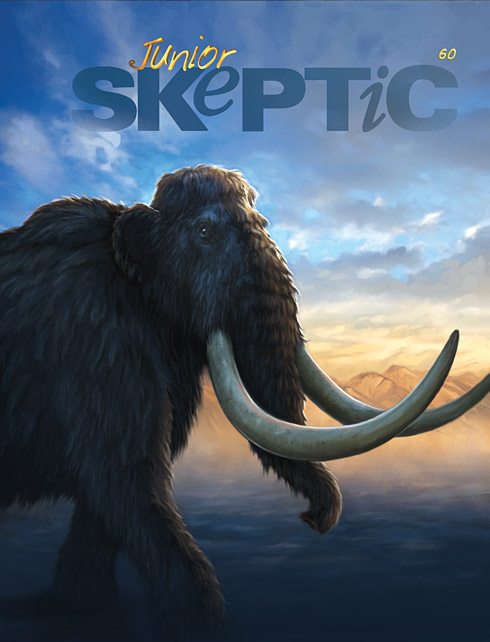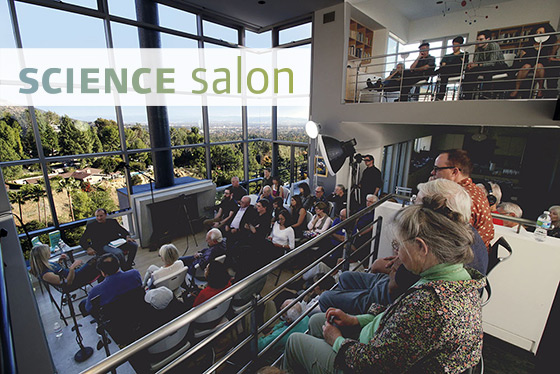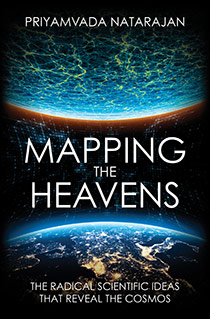In this week’s eSkeptic:
Frauds, Hoaxes and Splendor in the Past
MONSTERTALK EPISODE 113
Ken Feder returns to talk about his new book Ancient America: Fifty Archaeological Sites to See for Yourself, which is available for pre-order now on Amazon. Discussion in this episode centers around the failings of science coverage in the media, the latest on the famous Piltdown Man hoax, and why everyone needs to visit historical archaeological sites when they can.
Get the MonsterTalk Podcast App and enjoy the science show about monsters on your handheld devices! Available for iOS, Android, and Windows 8 devices. Subscribe to MonsterTalk for free on iTunes. Follow the RSS feed.
![Cro-Magnon artists painting in Font-de-Gaume, by Charles Robert Knight (1874-1953) [Public domain], via Wikimedia Commons](https://www.skeptic.com/eskeptic/2016/images/16-09-28/charles-knight-cave-painting-color.jpg)
Cro-Magnon artists painting in Font-de-Gaume, by Charles Robert Knight (1874–1953) [Public domain], via Wikimedia Commons
In the pages of Junior Skeptic—the engagingly illustrated science and critical thinking publication for younger readers, bound within every issue of Skeptic magazine—we often look at “wild and wooly” mysteries. In Junior Skeptic #60 (2016), we mean that literally; we explore the hidden history of mammoths and mastodons! In this week’s eSkeptic, we present an excerpt from the first couple pages of the Junior Skeptic #60, bound within Skeptic magazine 21.3 (2016), available now in print and digital editions.
Mammoth Mysteries — Part I
by Daniel Loxton
The elephant family tree has had many oddly shaped branches. There once existed elephants with four tusks or even tusks shaped like shovels. But fossils of mammoths and mastodons weren’t just surprising—they changed science forever! Indeed, the discovery of these great shaggy prehistoric beasts overturned our understanding of the entire world. How did that happen?
First, before we consider the mammoths, I’d like you to pause for a moment and imagine some of the animals that lived even earlier, during the age of the dinosaurs. Picture these animals living and breathing in their natural environments. What do you see? Perhaps the terrible teeth of Tyrannosaurus rex slavering toward prey, or rows of plates proudly displayed over the arching back of Stegosaurus. You may imagine batwinged pterosaurs soaring overhead, titanic long-necked sauropod dinosaurs, graceful plesiosaurs darting after fish in the seas.

Get this issue of Junior Skeptic bound within issue 21.3 of Skeptic. This issue’s cover features a digital painting by Daniel Loxton.
If I asked you where these animals are today, you would tell me that they’re all gone from the world. Extinct. And how do we know about these vanished creatures? You can answer that question, too: from fossils—the petrified traces these animals left behind. Bones. Teeth. Muddy footprints hardened into stone.
You probably can’t remember when you learned these things. It feels like you’ve always known! Many kids learn about prehistoric creatures when they are toddlers, long before they can read.
But that wasn’t always the case. There was a time when no child, no scientist, no human being knew any of that. Dinosaurs, fossils, extinction—no one knew, and no one ever had known. […]
SKEPTIC MAGAZINE 21.3
Is Internet Pornography Bad For You?
Does watching Internet porn cause sexual dysfunction? Can it rewire your brain? Has it undermined our ability to relate to real sex? The latest issue of Skeptic magazine (21.3), INTERNET PORN, examines these questions and more. This issue also covers: the hazards of herbal medicine; tales of the discovery of an Ancient Mayan city on Google Earth; sexual orientation defined; the paleo diet; the science of substance abuse treatment; terror attacks that never were; electromagnetic field panics; mammoth mysteries; and more!
Skeptic magazine 21.3 (2016) is available now in print and digital editions.
30-DAY FREE TRIAL
on digital subscriptions
Subscribe to Skeptic magazine on PocketMags.com or via the Skeptic Magazine App on your favourite iOS or Android device (or via PocketMags.com on your PC or Mac) and try the latest issue free for 30 days! Here’s a sneak peak at this issue for iPad…

About Science Salon
In the tradition of the Enlightenment salons that helped drive the Age of Reason and the public interest in science, the Skeptics Society is pleased to announce the next two intimate Science Salons featuring an “in conversation” between Dr. Michael Shermer and professor of cognitive science, Dr. Benjamin Bergen (October 16) and cosmologist and theoretical astrophysicist, Dr. Priyamvada Natarajan (November 13). Dr. Shermer will discuss the guest’s latest science book or research project in a dialogue format, followed by an intimate conversation with the audience that allows more interaction with the guest than a formal Q&A.
IMPORTANT TICKET INFORMATION: Advance tickets are required. Tickets will not be sold at the door. Purchase by calling the Skeptics Society office at 1-626-794-3119. Seating is limited. $50 per individual (includes a reserved seat, autographed copy of the guest’s book, hors d’oeuvres and wine).
WHAT THE F
What Swearing Reveals About Our Language, Our Brains, and Ourselves
Dr. Benjamin Bergen is a professor of cognitive science at the University of California, San Diego, and in his new book he explains why profanity is so appealing to us. Let’s face it, we all swear. Whether we’re happy or mad, uttering a four-letter word seems to be a natural occurrence for most of us. But why do we swear, even when we know we’re breaking cultural taboos? Why are some words off limits in certain countries or deemed offensive in past centuries but are considered perfectly tame in others? What does all this g*ddamn swearing tell us about our language and our brains? Bergen has the answers as he illuminates the controversial and complex nature of profanity and its relationship on our culture.
Order What the F: What Swearing Reveals About Our Language, Our Brains, and Ourselves from Amazon.
Call 1-626-794-3119 now to reserve.
MAPPING THE HEAVENS
The Radical Scientific Ideas That Reveal The Cosmos
Dr. Priyamvada Natarajan is a cosmologist and theoretical astrophysicist from Yale University, specializing in dark matter, dark energy, and black holes. She also holds the Sophie and Tycho Brahe Professorship of the Dark Cosmology Centre, Niels Bohr Institute, at the University of Copenhagen, Denmark. She is passionate about sharing science with the general public and in her new book she provides a tour of the “greatest hits” of cosmological discoveries—the ideas that reshaped our universe over the past century. The cosmos, once understood as a stagnant place, filled with the ordinary, is now a universe that is expanding at an accelerating pace, propelled by dark energy and structured by dark matter. Priyamvada Natarajan is at the forefront of this research—an astrophysicist who literally creates maps of invisible matter in the universe. In the book, she not only explains for a wide audience the science behind these essential ideas but also provides an understanding of how radical scientific theories gain acceptance. The formation and growth of black holes, dark matter halos, the accelerating expansion of the universe, the echo of the big bang, the discovery of exoplanets, and the possibility of other universes—these are some of the puzzling cosmological topics of the early twenty-first century. Natarajan discusses why the acceptance of new ideas about the universe and our place in it has never been linear and always contested even within the scientific community. And she affirms that, shifting and incomplete as science always must be, it offers the best path we have toward making sense of our wondrous, mysterious universe.
Order Mapping the Heavens: The Radical Scientific Ideas That Reveal The Cosmos from Amazon.
Call 1-626-794-3119 now to reserve.

















